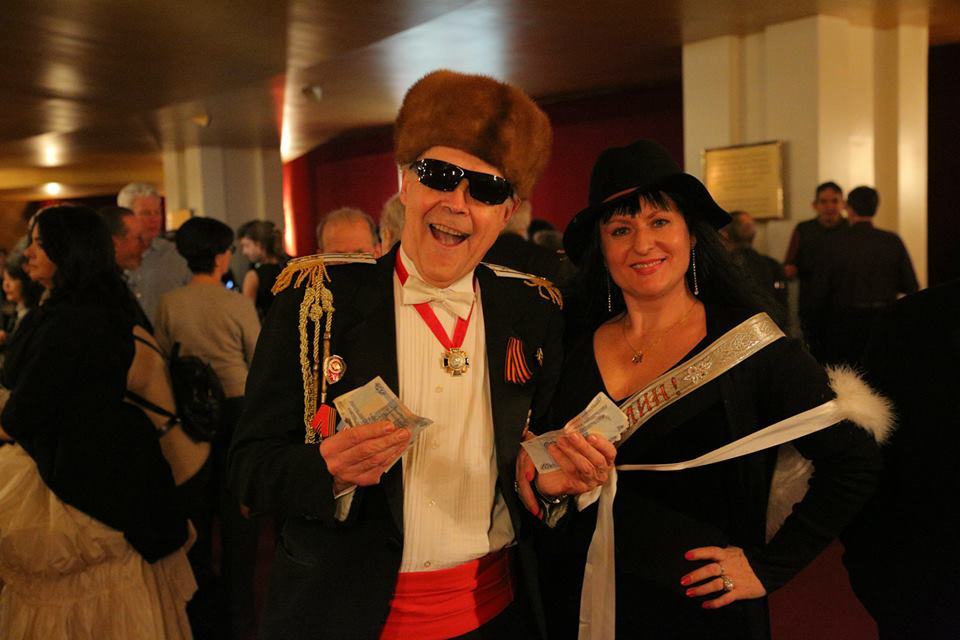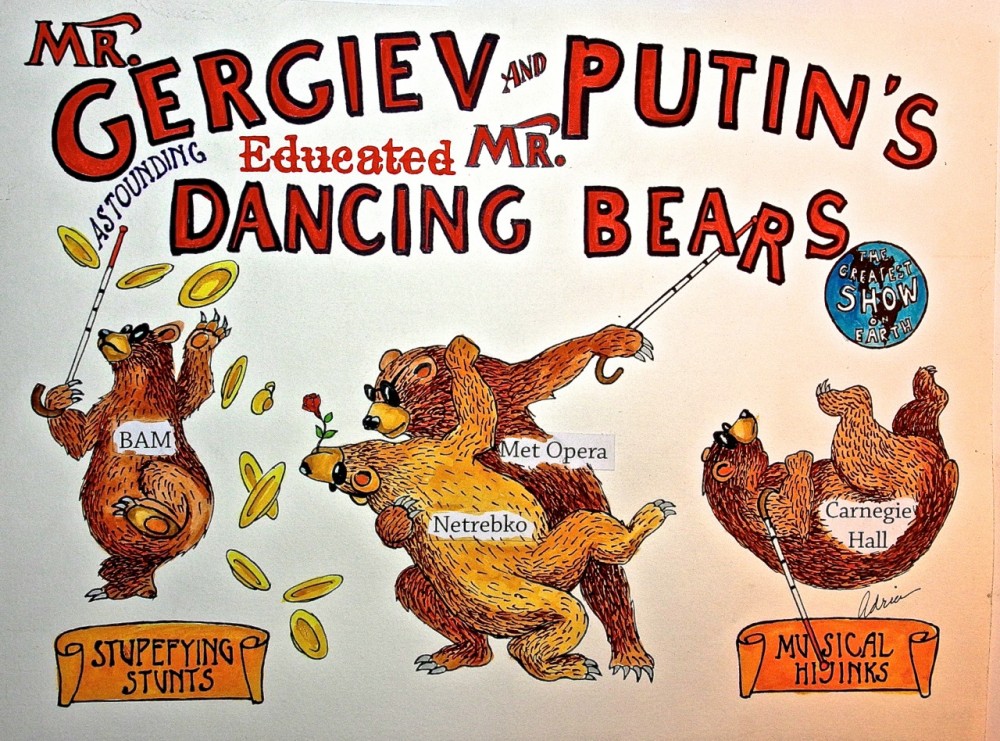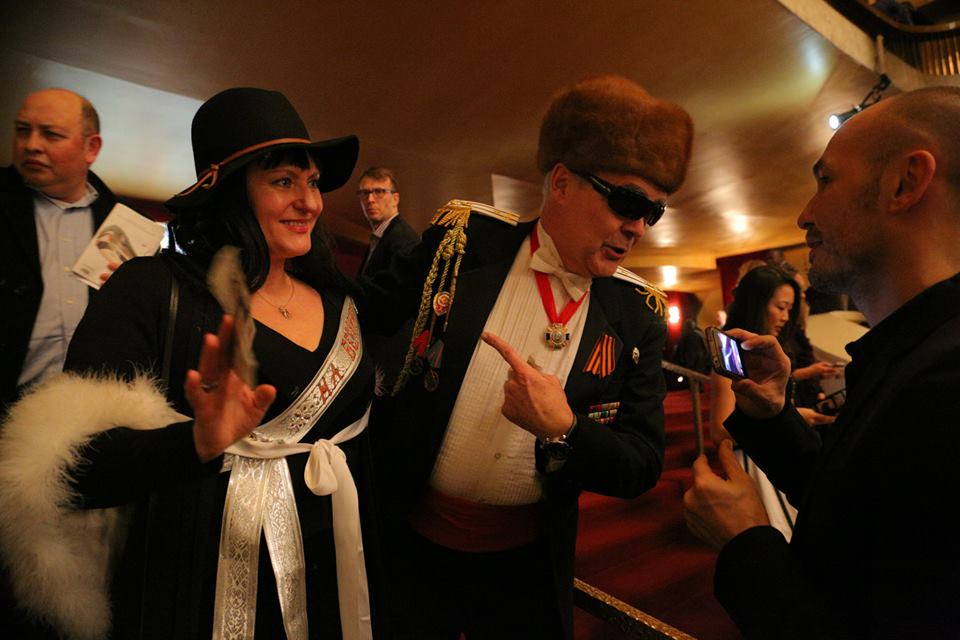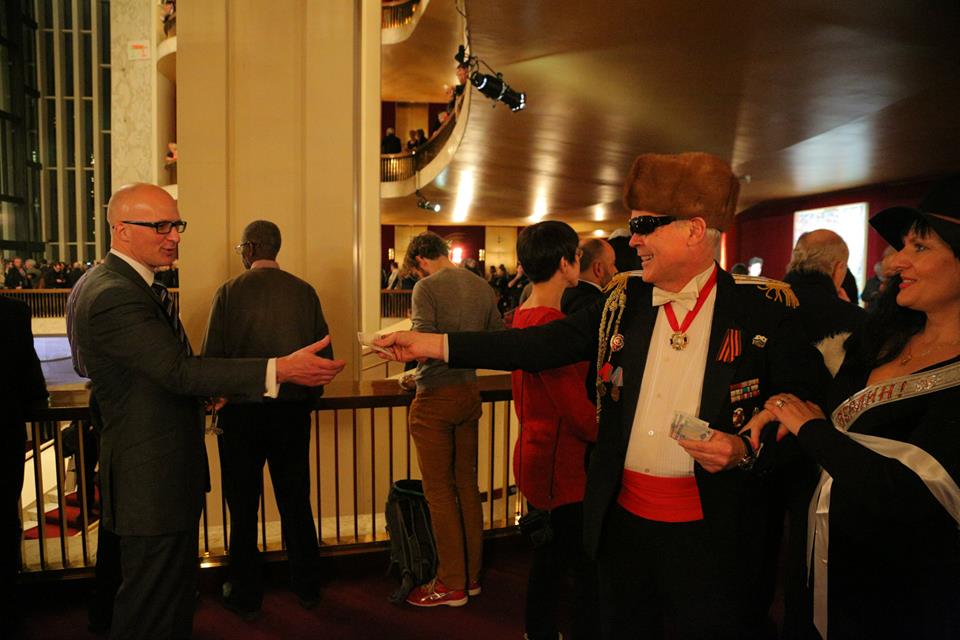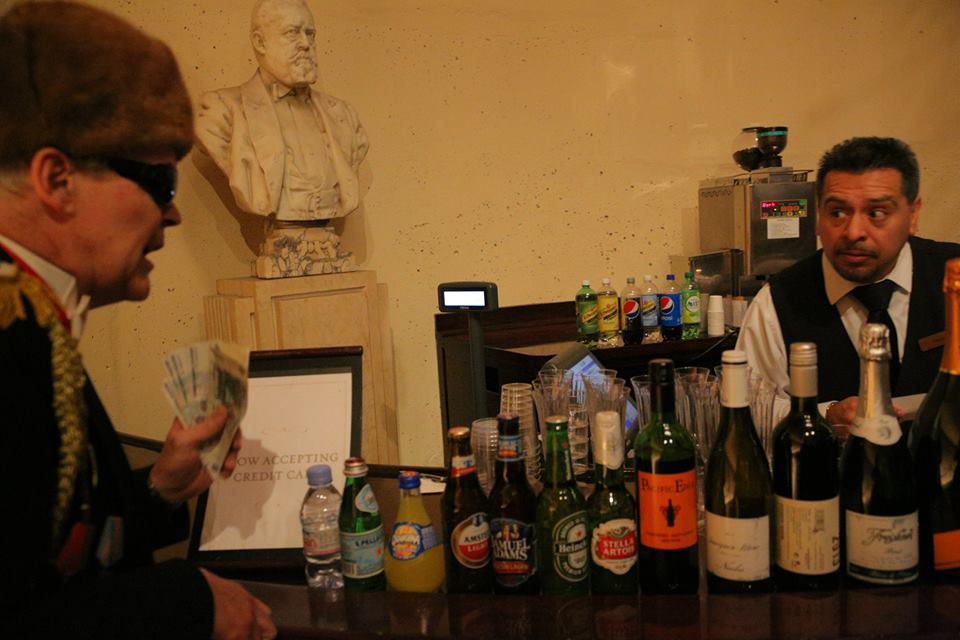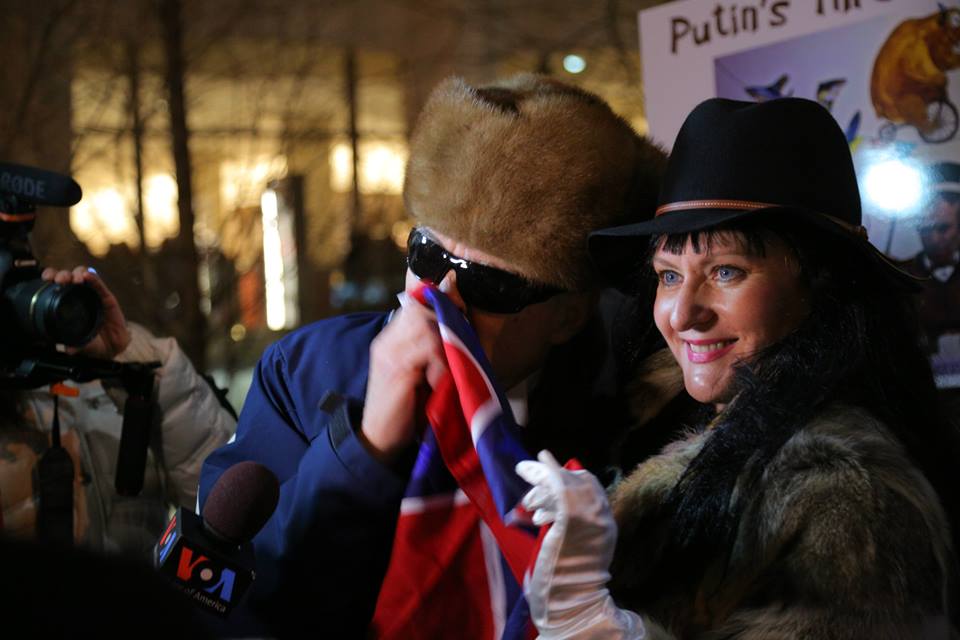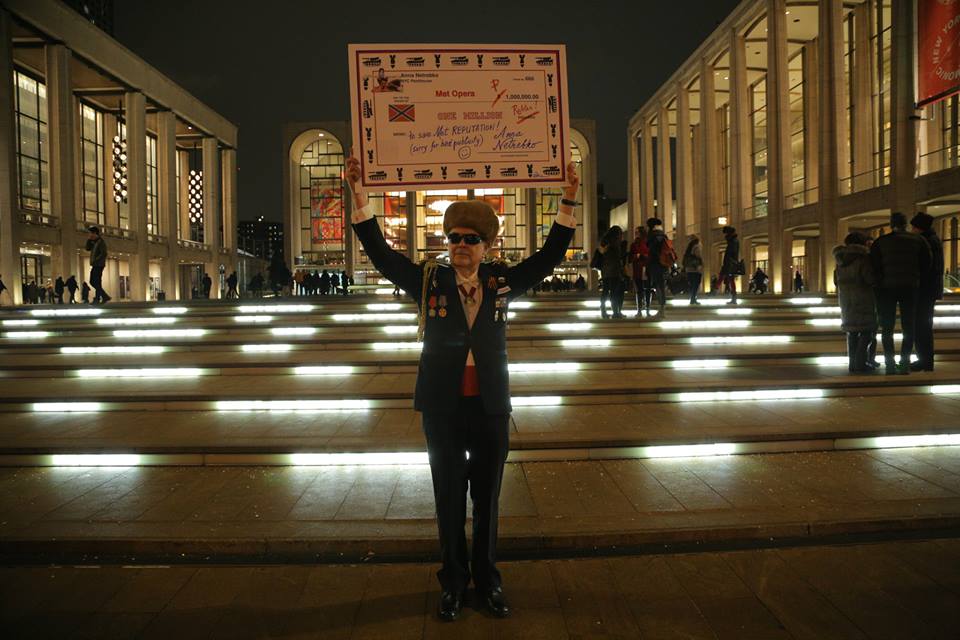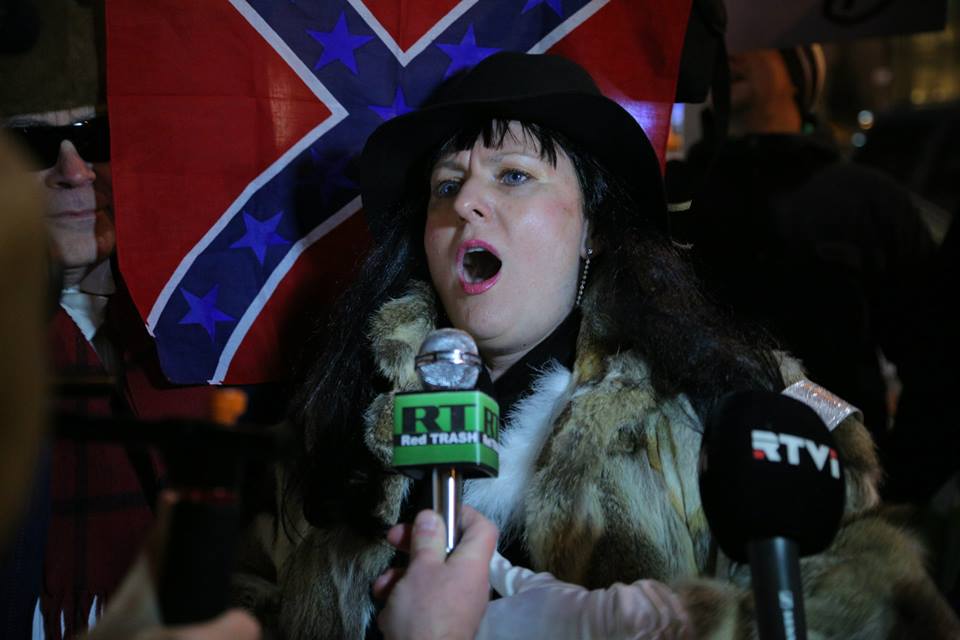This article describes several creative protest events and projects we implemented against pro-Putin Russian musical artists. Our goal was to let the world know of the odiousness these performers stand for. The New York appearances of soprano Anna Netrebko and conductor Valery Gergiev at BAM, Carnegie Hall and the Met Opera provided the opportunity.
Netrebko, Gergiev and other pro-Putin artists were met by protests at Michigan University, Yale, Morristown, Naples, Philadelphia and especially in New York, where demonstrators braved bitterly cold weather for weeks in order to get their message out to the concert going public.
We attempted to try an original approach, create something eye-catching and artistic, and explore satire and humor to catch the attention of the media. It really is all about how you package your message.
As an example of humor, here are two illustrations painted by Adrian Bryttan. The first is the Three Monkeys which referred to the “hear-see-speak no evil” stance of Netrebko, Gergiev and the Met Opera management towards the pro-Putin propaganda of Netrebko and Gergiev. This drawing was published in the popular classic music blog Slipped Disc.
The Dancing Bears portrayed blind circus bears, referring to the managements of Carnegie Hall, BAM and the Met Opera - all of whom refuse to see what their artists like Netrebko are doing when they support terrorism. The design was inspired by old posters for Barnum & Bailey's Circus. This cartoon was published in The Examiner.
Dmitry Smelansky, coordinator of the group “Arts Against Aggression", enlarged both illustrations and brought them down from Boston to use in many of the protests. They were widely photographed and appeared in many newspaper publications and TV reports.
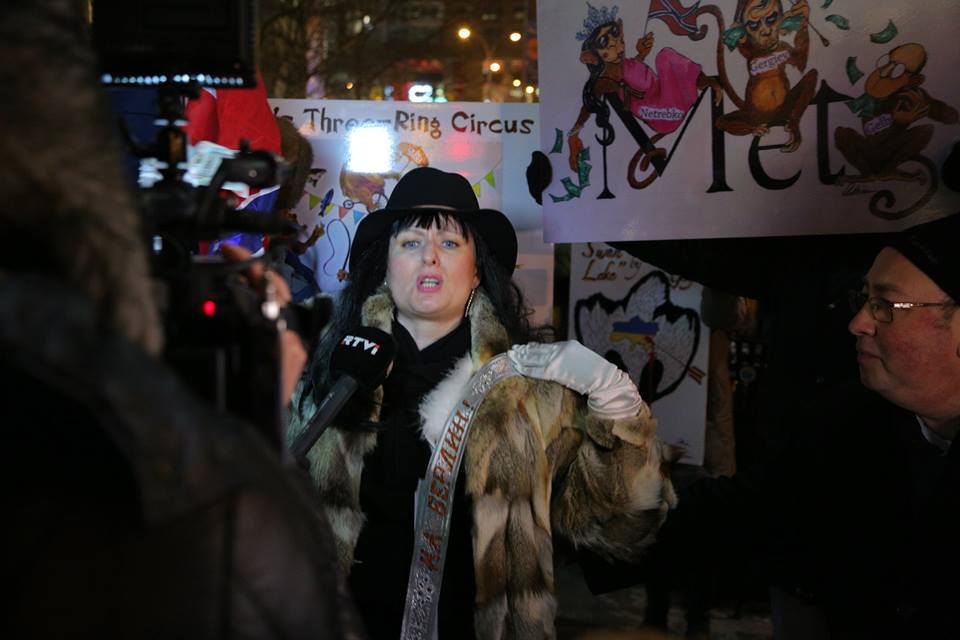
On January 29, 2015 the group “Arts Against Aggression” created an event featuring two New York activists, Liudmila Joy-Vasuta and Adrian Bryttan. As Met Opera audience members, they dressed up in costume to parody soprano Anna Netrebko and the terrorist Oleg Tsarov (the Donetsk "leader" widely seen in photographs accepting one million rubles from Netrebko, while both held the "Novorossiya" flag for public consumption).
Our strategy was not to brand Netrebko and Gergiev as evil enemies, but to utilize their own words and actions for satire. Our goal was to spark media interest and coverage of this original "impersonation". Reporters are deluged daily with press releases and fact sheets from numerous organizations, and it was hoped this original tongue-in-cheek theatrical presentation would be of special interest.

An important part of the story line presented to the media was that Tsarov would that evening donate one million rubles to the Met Opera to "salvage its reputation after all the bad publicity caused by Gergiev's and Netrebko's support for the terrorists and Putin". Mock "news conferences" were staged in Lincoln Center right before the "Iolanta" premiere - which in fact resulted in attracting several legitimate media representatives.
We were not sure if real media outlets would cover our mock “news conferences” so we even prepared our own fake RT microphone with a Red Trash (RT) logo, which was photographed and shown on all the real news reports. We kept our project secret, and on the night of the performance even some of our own fellow protestors thought it was a real RT reporter interviewing Netrebko and began to shout “Shame on Netrebko” and “Shame on the Met”.
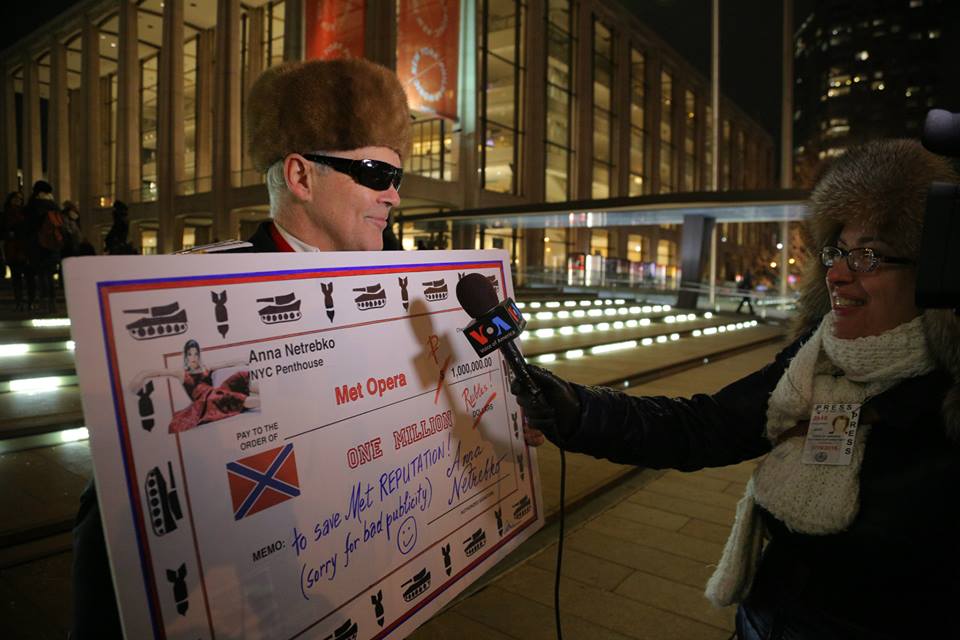
Once inside the Met, there was ample opportunity for both impersonators to display their "personas" to opera fans. Our Netrebko clone portrayed an addle-headed soprano proud of her support for terrorists and wearing her famous "On to Berlin!" sash. Our Tsarov clone (in white socks and tuxedo bristling with third world dictator medals) promenaded during the intermission and handed out free rubles to fellow audience members.
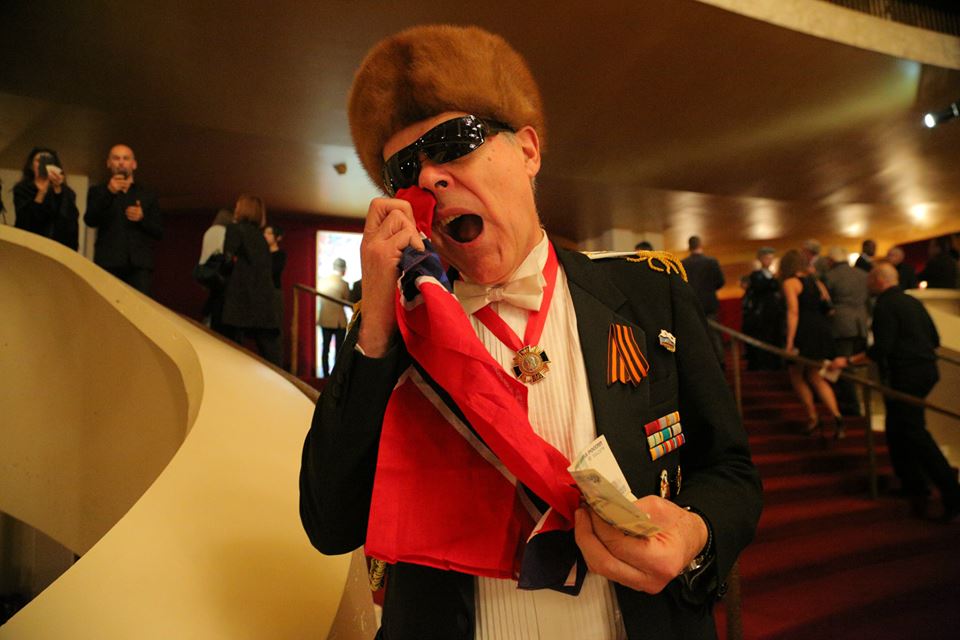
Press releases were sent out and the resulting media coverage was quite successful. A photo with "Tsarov" holding the check for the MET was featured in a story by the Wall Street Journal
, Voice of America broadcast extended video interviews with both "Netrebko" and "Tsarov", as did RTVi (international RussianTV network) in a video report, the Russian magazine "The New Times" (Novoye Vremya) posted a story with six photographs, YouTube videos appeared, along with numerous FBook posts and Tweets.
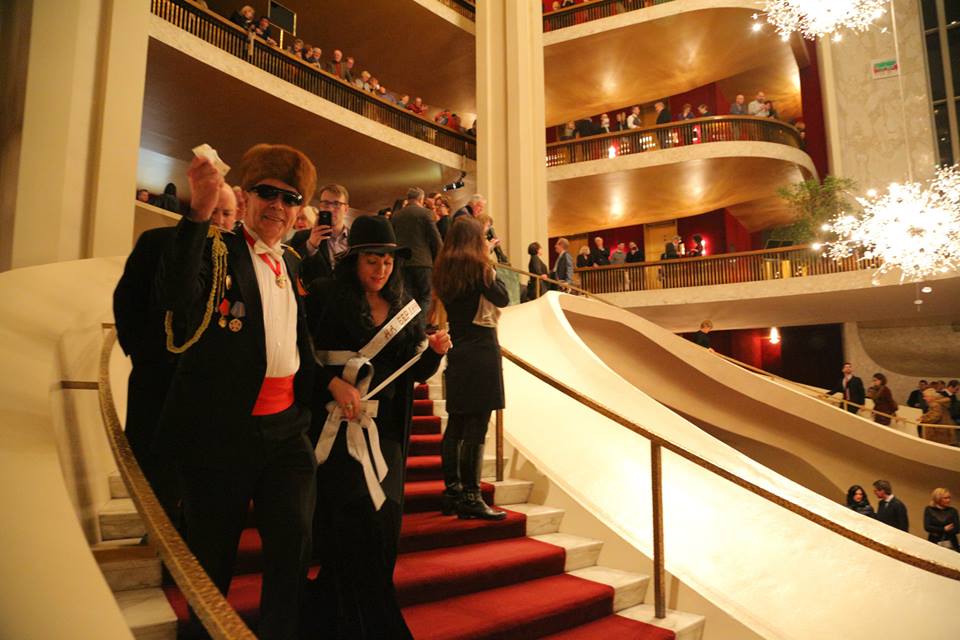
A New York Times reporter came to the Met to cover our “impersonation” and became a witness to the action of Roman Torgovitsky. He immediately wrote an article
and published a YouTube video which got over 140,000 views. It triggered a big scandal and hundreds of publications all around the globe. Thus, Roman’s action was portrayed not as hooliganism by a single individual but as part of a big protest.
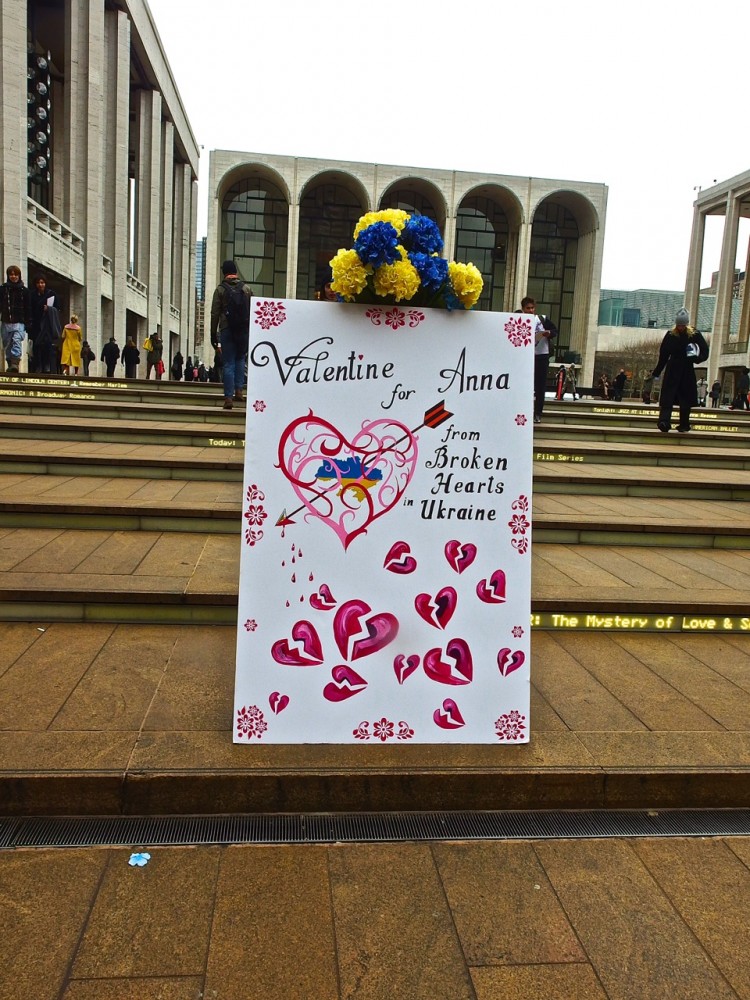
In another creative approach to draw media attention to the pro-Putin actions of Netrebko, “Arts Against Aggression” organized a special Valentine’s Day “tribute” to the soprano. Adrian Bryttan painted a five foot tall Valentine Card with a simple message: “Valentine for Anna - from Broken Hearts in Ukraine”. Here again, the strategy was not to demonize Netrebko with the usual polemics, but to portray on the surface a legitimate Valentine wish.
The (Russian/terrorist) St. George arrow piercing the big heart, and the numerous painted broken hearts made the point, but did not disturb casual viewers. On the contrary, many passersby asked to take photographs because they found it “so beautiful”.
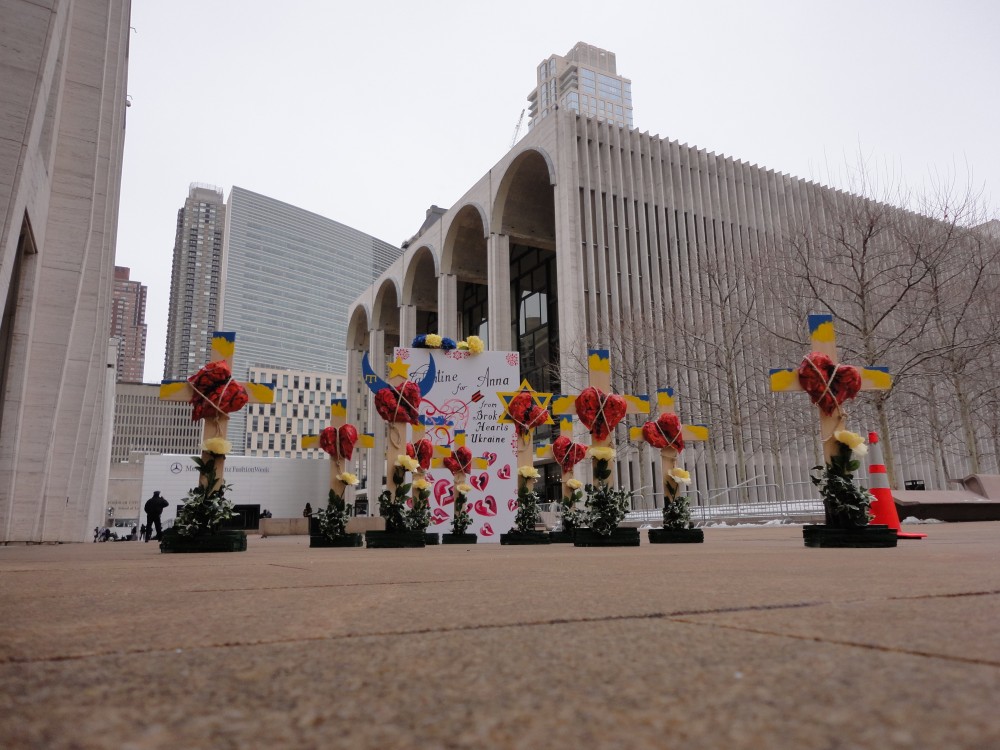
A second part of the Valentine event was to construct ten 3-foot tall crosses (including one Star of David and one Crimean Tatar half moon). Adrian Bryttan created a “broken heart” for each one representing the Ukrainian hearts forever silenced by Netrebko’s support for the Kremlin. The subliminal theme was a "garden of tears and broken hearts" caused by the actions of Netrebko. Here again, viewers were not assaulted by a frontal message, but were drawn to the art works themselves.
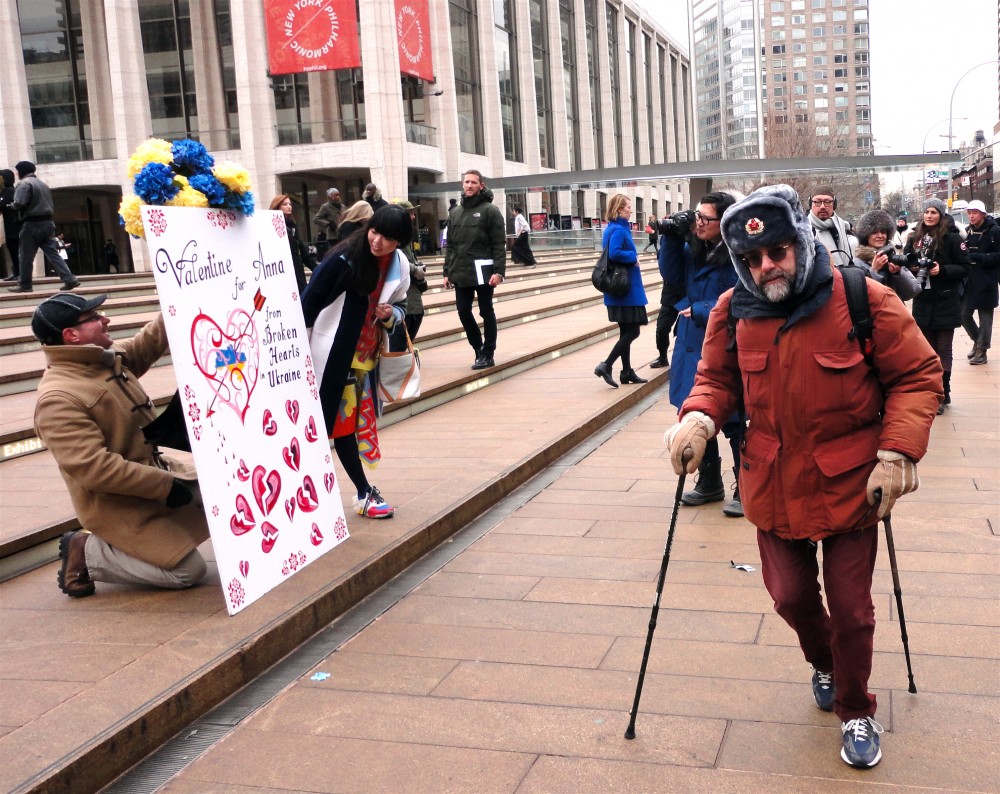
This was very helpful during the installations of the big card and ten crosses at Lincoln Center. There was a Fashion Week show at the Met on the same day, and many of the paparazzi began to snap photographs of our big poster. Susanna Lau, one of the biggest fashion bloggers, chose to pose next to our big Valentine, and her resulting photo appeared on the internet edition of Vogue magazine. An interview
with artist Adrian Bryttan was posted on YouTube and numerous articles appeared in the media.
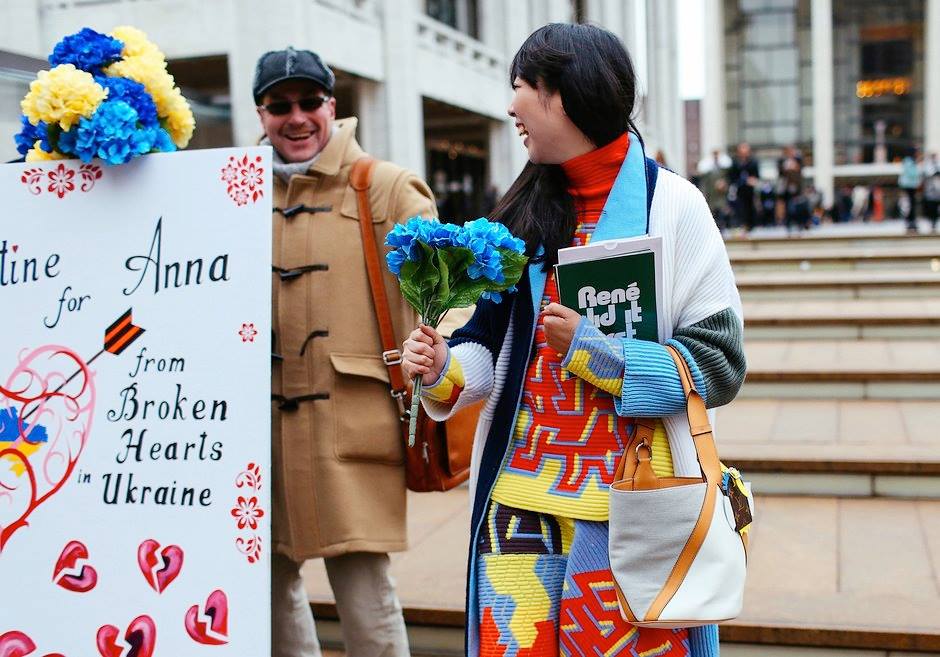
Above all, be as simple as possible, and always try to be artistic. During earlier demonstrations at BAM against Gergiev, Adrian Bryttan painted a Swan Lake poster with a simple, direct message: “Swan Lake by Valery Gergiev” with a dramatic bleeding swan pierced by a Russian arrow. A New York Times reporter came up to interview Adrian and took a photograph, and specifically asked about what inspired this poster. That same evening the reporter Tweeted about the Ukrainian protests at BAM, and posted his photograph of the swan poster.
The same reporter continued to Tweet 4 or 5 more photos from different nights of anti-Gergiev/Netrebko protests and on Jan 29 Tweeted: “Who would’ve thunk that covering the opera beat would mean covering the most street protests since my Metro days?”
Since most music reviews of Netrebko and Gergiev now also cite the protests and comment on these artists’ political actions, we can consider our goals achieved.

